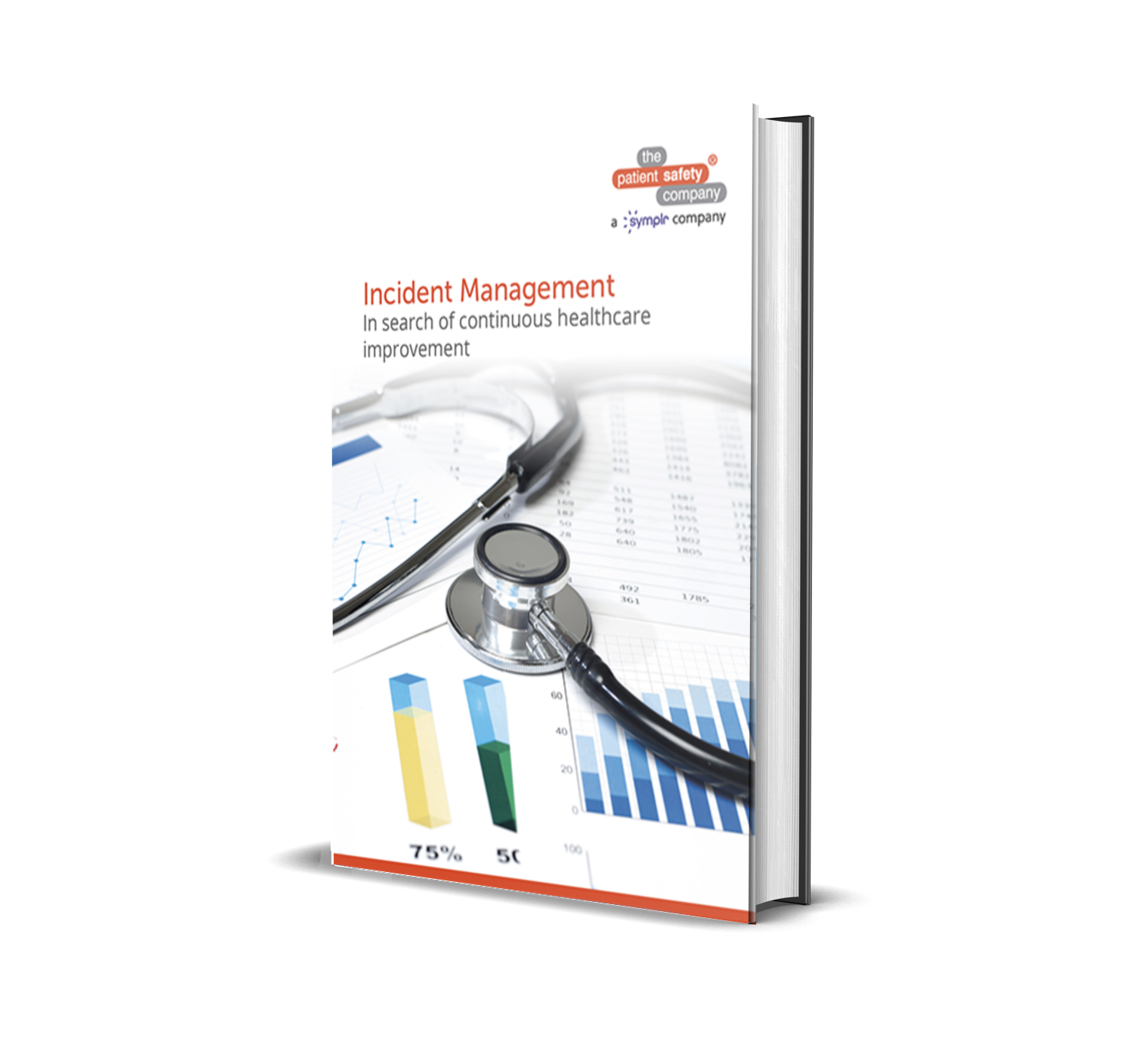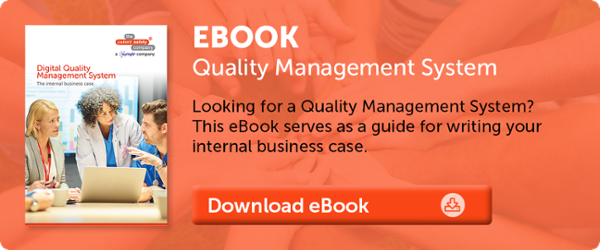Incident management in healthcare

Perhaps even more so than other sectors, the healthcare field is prone to incidents and near-incidents, making appropriate incident management a vital policy component. Digital means of managing such risks give you the flexibility to do so in an effective manner that fits your particular specialisms and work procedures. Having the right incident management software available can save your organisation a world of trouble, as the ability to use incident management tools helps staff and executives prevent future incidents while addressing the ones that do occur to maximum effect.
Most importantly, however, incident management healthcare solutions improve patient safety. Providing the best possible care with minimal risks calls for incident management tools that integrate smoothly into your operation and procedures. Transparency and absence of unnecessary barriers help raise staff awareness and increase willingness to report incidents and potential risks without unnecessary fear of reprisal. That makes our incident management health applications the ideal match for your organisation, too.
What is incident management in healthcare?
What incident management can do for you becomes apparent as soon as you allow current issues to escalate without adequate measures in place. Indeed, the very meaning of incident management hinges on the concept of not letting incidents spiral out of control and cause unnecessary damage to the people you work for, and work with, on a daily basis. Addressing incidents head-on, with the right resources and measures in place, can prevent injury, grief, reputation damage, and decidedly negative financial consequences in short- and longer-term perspectives.
Over our decades of field experience, we have often been startled by how many officials ask us: “what does incident management mean in our specific setting?” The very fact that such basic service elements are not entirely clear and self-evident illustrates our point. Failure to recognise just what is incident management in service provision now equals accidents waiting to happen. If you have even the slightest suspicion that your organisation is not equipped to deal with any potential incident, the time act is now.
Allow us to illustrate precisely what is incident management with a simple example. Suppose one of your patients accidentally falls during transfer from their bed to a wheelchair. Physical injuries are likely to ensue, as well as psychological trauma and anxiety for both the patient and staff on duty. Eventually, the family may well decide to file legal procedures and demand compensation. Rest assured that the reputation of your facility will suffer correspondingly.
If you had enabled your personnel to communicate the physical difficulties of transferring patients in the confined space of their specific ward after the preceding two near-incidents, which no-one reported, all this could have been avoided. This only becomes more regrettable once you realise how easy, accessible, and affordable our incident management software is: especially in the healthcare sector, prevention is always better than cure.
Incident Management eBook
Read our free eBook for more information about setting up incident management.
-
How do you ensure your organisation learns from incidents?
-
How to modernise to digital incident management?
-
Including tips for analysing incidents.

Why is incident management important?
Understanding why incident management is important constitutes the first step towards preventing unnecessary grief and escalation for real people in vulnerable positions. That means your patients first and foremost; but do not underestimate the impact that (near-) incidents have on your valuable staff. This becomes even more important in a field where healthcare professionals increasingly consider career switches due to mounting professional pressures.
We realise that many of these external factors are beyond your control. Arranging for the right means to handle incidents, however, is not. This is why incident management is important not just for healthcare workers and patients, but ultimately determine the future of your organisation as a whole.
A selection of our blogs

Just Culture: addressing errors in medical care

The SIRE Method: A Specialised Version of Root Cause Analysis

The PRISMA Incident Analysis Method: Improving Patient Safety

How staffing shortages affect patient safety
The process of incident management in healthcare
Once you realise how critical such measures are, determining the best incident management process becomes the obvious next step. Ensuring a smooth and clear incident management process flow is key in this regard. All your people must know exactly what they can and cannot do; but moreover, they should experience minimal obstruction in contributing to this essential process. Our various incident management process template solutions allow you to select precisely those components that best match your preferred way of working.
The Patient Safety Company has a wealth of practical expertise to help you find your ideal solution. We know the key components that you cannot afford to miss, but we also have the right expertise to know how to implement your incident management process for you. This has the benefit of ensuring a fast, problem-free roll-out, but it also puts us in a perfect position to show you what other key processes incident management can be an input to.
Adequate handling of incidents has positive implications for patient safety, quality control, staff job satisfaction, and accurate incident reporting procedures. Once your people know exactly what is your incident management process, they become valuable eyes-and-ears on the ground for executives and patients alike. You are sure to appreciate the return on this essential investment once you experience how the incident management life cycle keeps expanding and refining your options to prevent and handle any incidents the future may bring.
Read more about the options for analysing incidents with our software and its translation into management reports.
Reporting an incident in healthcare organisations
Incident reporting can be an intimidating prospect for your staff if you fail to ensure full procedural transparency, or - even worse - if they feel there is a risk of personal repercussions if they point out flaws in the care you provide. We have seen how incident reporting in NHS settings can be stifled by a culture of fear and silence, which will only cost you more eventually due to all the opportunities you are bound to miss.
We know precisely how to remove such obstacles through creating a user-friendly, solution-oriented atmosphere. We put the right online tools in place that are easy and inviting to use and to share among your personnel as a whole. This approach makes incident reporting in healthcare organisations a shared responsibility to embrace, rather than a career risk best avoided.
Receive 14 tips for developing the best incident reporting forms!
Are there incident management solutions for my organisation, too?
Some executives wonder whether the unique nature of their organisation leaves enough room for finding adequate incident management solutions. Rest assured that we have worked with enough hospitals, clinics, outpatient wards, mental health specialists, and other healthcare variants both in the UK and far beyond to guarantee there is a perfect fit for you, too.
Our incident management solutions reviews are testimony to the adaptability of our online tools and app-based management instruments. But of course, you will want to discuss all the particular details of your own unique organisation before deciding on your best personal match. This makes perfect sense, but we can assure you that a proactive approach is better than waiting until actual incidents force you to decide.
The dedicated team staffing our incident management solutions contact number are happy to tell you all about the best way ahead. If you make that call and consult our experts today, you have taken the most important step to manage the incidents that may await you tomorrow!
Overview ready-made applications:
We have various ready-made applications for the organization of your incident management. You can quickly start using these applications and adapt them to the specific situation in your organization.
-
Some examples:
- Safety Rounds
- Competence Checklist
- Evaluation Fire Alarm
How to make the internal business case
Is your organization about to make the transition from paper to digital work? Or do you have a digital incident management system you want to replace? In both cases the best advice is to make a business case. Download our e-book and use it as a guide for writing your internal business case.

Benefits TPSC CloudTM software
With our software, a complete Patient Safety platform is ready for you.
Flexible platform
Access anytime, anywhere, securely managed in the cloud. Flexible and scalable to organize due to the modular structure. With many options to adjust each part to your own needs.
Easy implementation
Quick and easy to set up. Due to the user-friendly design, no programming knowledge is required for the implementation. Our consultants are ready to help with your configuration.
Low cost
Our software is a cost-efficient solution for patient safety management, because many of the building blocks have already been made for you! Suitable for both small and large organizations.
Schedule a free online demo or discuss your needs with a specialist.
-
Learn things like creating an incident reporting form
-
See how easily you can analyse incidents and quality-related data
